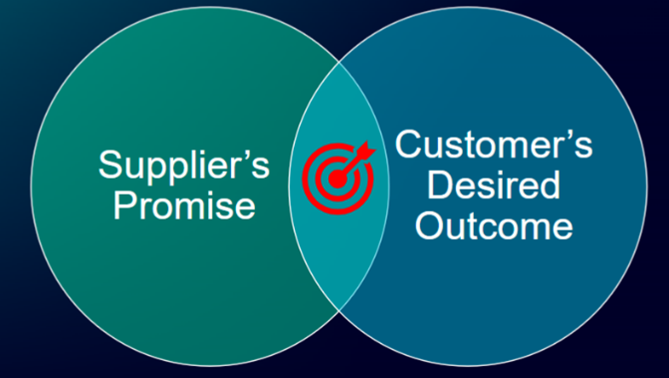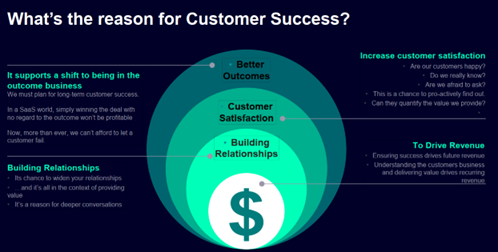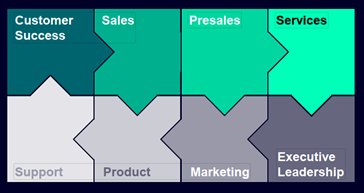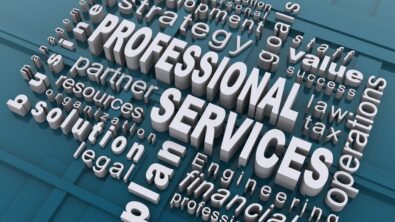Building a customer success capability to drive financial consistency & scalability

Welcome to the fifth and final blog in our series created to help Siemens partners transform their businesses to the SaaS and Cloud models. Today, we focus on Customer Success, a crucial function to thrive in a SaaS world.
Before thoroughly analyzing Customer Success, let’s examine why its importance has grown so drastically. The need for Customer Success reflects the evolving nature of the customer-vendor relationship. In the past, the vendor supplied solutions to address a specific need, along with implementation and support services. Customer support was reactive, usually to resolve a functional issue. The SaaS model has radically changed this approach.
Vendors no longer simply supply technical solutions. They must actively help customers achieve business goals and value realization from the solutions. Effectively, the vendor seeks to become a trusted partner and advisor to the customer by:
- Focusing on the customer’s desired business outcomes – not purely technology
- Driving continuous proactive engagement, thereby anticipating and avoiding unnecessary risk
- Delivering tangible business value
To paraphrase, Customer Success is the intersection where the promise of a supplier’s products and services meets the business outcome customers want to achieve.

Partners who are serious about finding success with the SaaS business model must make a very clear commitment to the Customer Success function. So, what needs to change in the partner business model to facilitate this function?
The answer is that customer interactions must be reconsidered from the top down. All roles – executive management, sales, pre-sales, services and support functions – must be focused on customer experience and outcomes. Everyone in the organization must challenge themselves to continuously ensure customers’ success throughout the relationship.
Partners need to look at Customer Success as an opportunity to adapt and grow their business for the future. Some key around Customer Success include:
- A new approach for Siemens and our partners involved throughout the customer lifecycle
- A proactive approach to customer engagement and relationship management
- A methodology for improving customer loyalty, reducing churn and increasing lifetime value
- Recognize and embrace Customer Success as essential to any successful SaaS business.
Let’s look more at how a partner can achieve viability and long-term success via Customer Success.
With SaaS, retention and expansion are key to growing profits
Partners need to focus on driving better business outcomes instead of just improved technical performance. Strong customer success correlates to better future revenue and profit for the partner. Retaining customer loyalty (retention) and selling add-on capabilities (expansion) are key to growing revenue and achieving the desired profit. Retention revenue comes from existing customers who continue to use partner-provided solutions. By focusing on customers’ business goals, partners can secure customer satisfaction and loyalty, leading to higher retention rates, renewal growth and, consequently, better revenue and profit.
A complementary sales strategy is to pursue additional revenue through up-selling and cross-selling. This expansion revenue opportunity is again derived from strong customer relationships (e.g., high customer success). The tie-up between these factors is clear – focus on customer success to drive value and a stronger customer relationship to yield more revenue.
The four pillars of customer success
Customer Success is the foundation of a partner’s viability in a demanding SaaS-based business environment. Let’s look at the four pillars of Customer Success:
- Strong customer relationships – go beyond the traditional supplier-customer transactional relationship, firmly show and align how your solution addresses customer business goals
- Customer first mentality – consider their best interests and address their concerns over yours, aiming for deeper conversations that lead to providing greater value.
- Provide customer value – go beyond the customer just using the solution, striving for optimal, impactful productivity gains that will improve the customer’s business
Become the voice of the customer – learn to understand your customers—both as individuals and as a business by conducting formal surveys and leveraging feedback to enhance solution capability and customer satisfaction

In short, Customer Success is not just doing something a little better than you already do; it is a profound shift and an entirely different engagement experience with the customer. Understanding the customer’s business and where effort is best applied will drive greater high-value vendor-customer relationships.
Build your customer success capabilities one step at a time
Partners are not expected to flick a switch and have a customer-facing, ready-to-serve Customer Success operation. It will take careful planning and non-disruptive (e.g., not negatively impacting cash flow) implementation. Let’s examine how to introduce and gradually develop a Customer Success practice and its impact on employees.
Re-focus the business
Your employees need to understand the need for Customer Success and what such a capability looks like. They must know their role in establishing a Customer Success practice. Building a Customer Success team is a challenging but crucially important task. There are many factors to consider and plan for:
- Roles and responsibilities – will you hire experienced practitioners or re-train existing staff?
- Select the right people – you need people who are customer-focused, good communicators, and proactive
- Developing a training program – develop your talent progressively, focusing on advancing all types of customer-facing skills (e.g., hard vs soft skills).
- Supporting technology – leverage tools that support process automation, adoption data management, and ability to track customer successes and outcomes
Stages of customer success maturity
Implementing an effective Customer Success practice takes time, training and customer awareness of this shifting focus by the partner. A typical path to full implementation can look something like:
- Adoption – focus on getting customers to use and realize value from your solutions. This goes beyond just providing user training. Ensuring productive usage results in the highest levels of customer satisfaction.
- Retention – focus on reducing churn and maximizing renewals. High churn rates inevitably lead to failure for a SaaS-orientated business.
- Expansion – Identify expansion opportunities to upsell/cross-sell. Adoption, if executed well, will provide opportunities to increase users and add-on products across the customer organization.
- Optimization – focus on cost-effective scaling through automation. Segment customers based on their needs, goals and product usage.
- Transformation – Customer Success becomes a strategic imperative where customers can count on experiencing this higher-level attention from their supplier.
Collaboration
As a final thought on building a successful practice, consider Customer success a “team sport” that requires all players to work together. As opposed to a traditional sales approach where an account executive leads the process, in a SaaS sales environment, several contributors from the partner team must be involved from the onset of the sales pursuit.

Early involvement, understanding, and influence from resources across the organization will: A) better address the customer’s business goals and B) ensure all customer needs are factored in the solution proposal. This is an ideal approach to Customer Success because the outcome is likely to fully satisfy both the customer and supplier by considering all the key parameters upfront.
Conclusion
Throughout these five blog posts, we have described the SaaS/Cloud business transformation process for Siemens partners seeking to drive future growth and prosperity in a rapidly changing market. Each post has addressed, in detail, the challenges of making this transformation while providing insight for overcoming these challenges and a path to fruition. As a reminder, here are the other four blogs in the series:
- Achieving Real Results with Business Transformation
- Building a Financial & Organizational Strategy for Transformation
- Building a Sales & Marketing Engine that Thrives in a SaaS World
- Building a Professional Services Practice to Multiply Your Profitability
- Building a Customer Success Capability to Drive Financial Consistency & Scalability
About the authors
Toni Reszka is Director of Global Partner enablement at Siemens Digital Industries Software. He has over 30 years of experience in partner business development and managing several major partners across international territories. He is currently leading Siemens’ XPE program, which helps partner businesses transform to XaaS.
Ryan Morris is Principal Consultant for Morris Management Partners. He has more than 25 years of experience in sales, marketing and management in the B2B technology solutions industry – specifically focused on building successful multi-tier channel solutions and profitable solution provider businesses.


